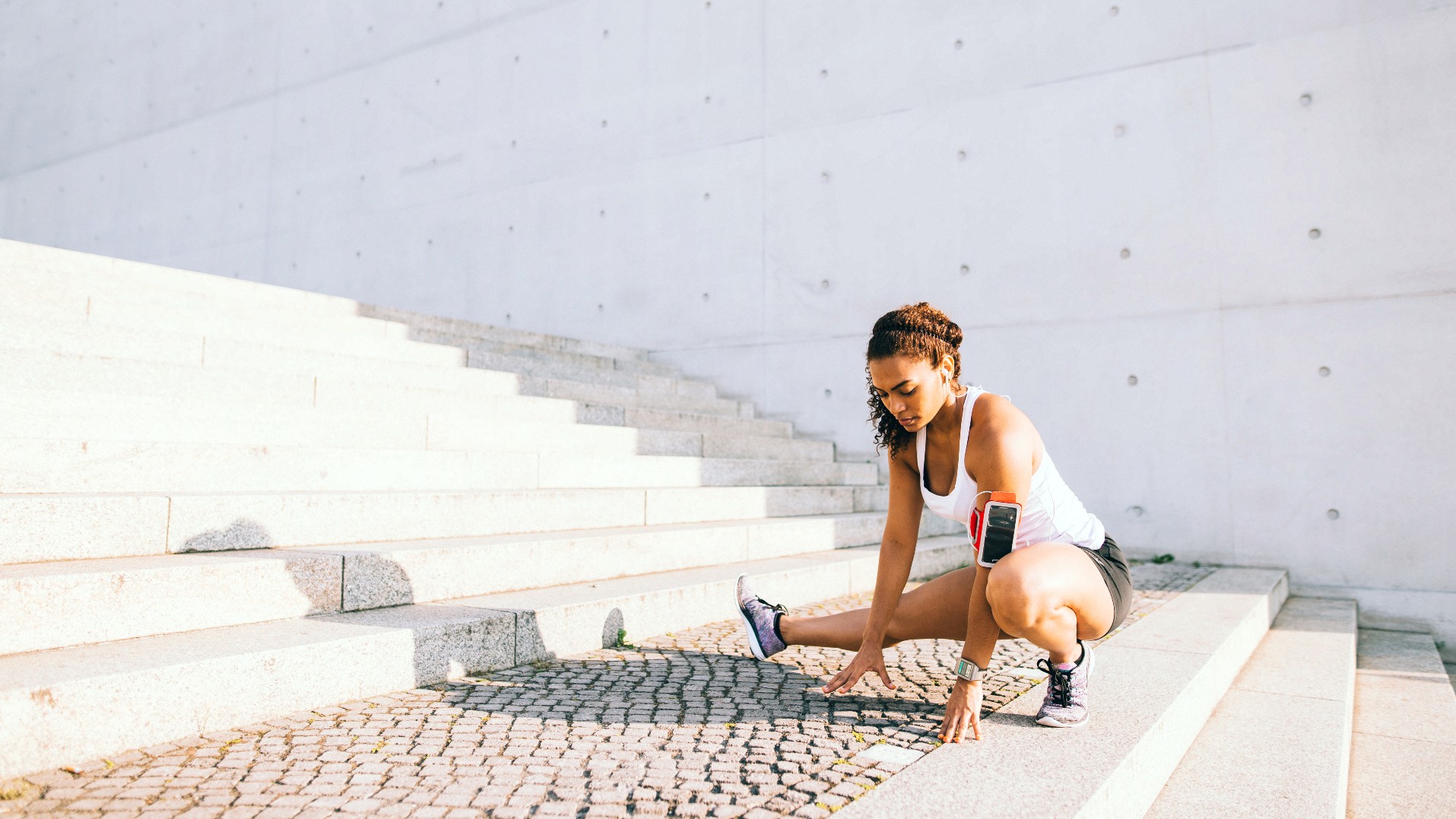
These six stretches for beginners ease tight hamstrings, calves, and ankles and boost flexibility in the lower body. If you suffer from tight muscles, strength, and flexibility exercises could stretch and strengthen muscles and increase overall range of motion.
Your muscles, tendons, and ligaments connect across the body, which means pain in one region could start somewhere else. Most research (like this Cureus study) shows that short and tight hamstrings and calves could cause tight or painful Achilles tendons. And in many cases, lower back pain results from tight hamstrings, glutes, or hip flexor muscles.
These six lower body stretches for beginners use dynamic (moving) and static (non-moving) exercises to ease soreness, improve flexibility, and boost workout performance.
If you’re injured, check with a medical professional before starting a new exercise regime, scale each exercise to your ability, and stop if you experience persistent pain. Grab one of the best yoga mats, and read on.
6 lower body stretches for beginners to boost flexibility
These lower body stretches for beginners shouldn’t aggravate the sciatic nerve, but if you do have that condition we also recommend the best exercises for sciatica. You can add one of the best resistance bands or use your body weight, but I strongly recommend using a cushion or yoga block for some (this $10 accessory is my go-to).
The six-move routine shouldn’t take longer than 15 minutes. Perform each exercise for 30-60 seconds and repeat 2-3 rounds per side.
1. Forward fold

The exercise releases tension in your lower back, glutes, and hamstring muscles. Bend your knees as much as you need to, and try not to hunch your back. Place a block under your hands to reduce intensity or under your feet to increase it.
Get instant access to breaking news, the hottest reviews, great deals and helpful tips.
- Stand with feet hip-width apart
- Inhale, then as you exhale, tuck your pelvis towards your spine, engage your core, and slowly lower your hands toward the floor
- Depending on ability, place your hands on your thighs, shins, block, or the floor, or hands on elbows
- Release your chest toward your thighs and relax your neck and spine
- Maintain a soft knee bend
- Hold. On an exhale, slowly rise to stand with heavy arms, stacking your spine one vertebra at a time.
2. Frog squat
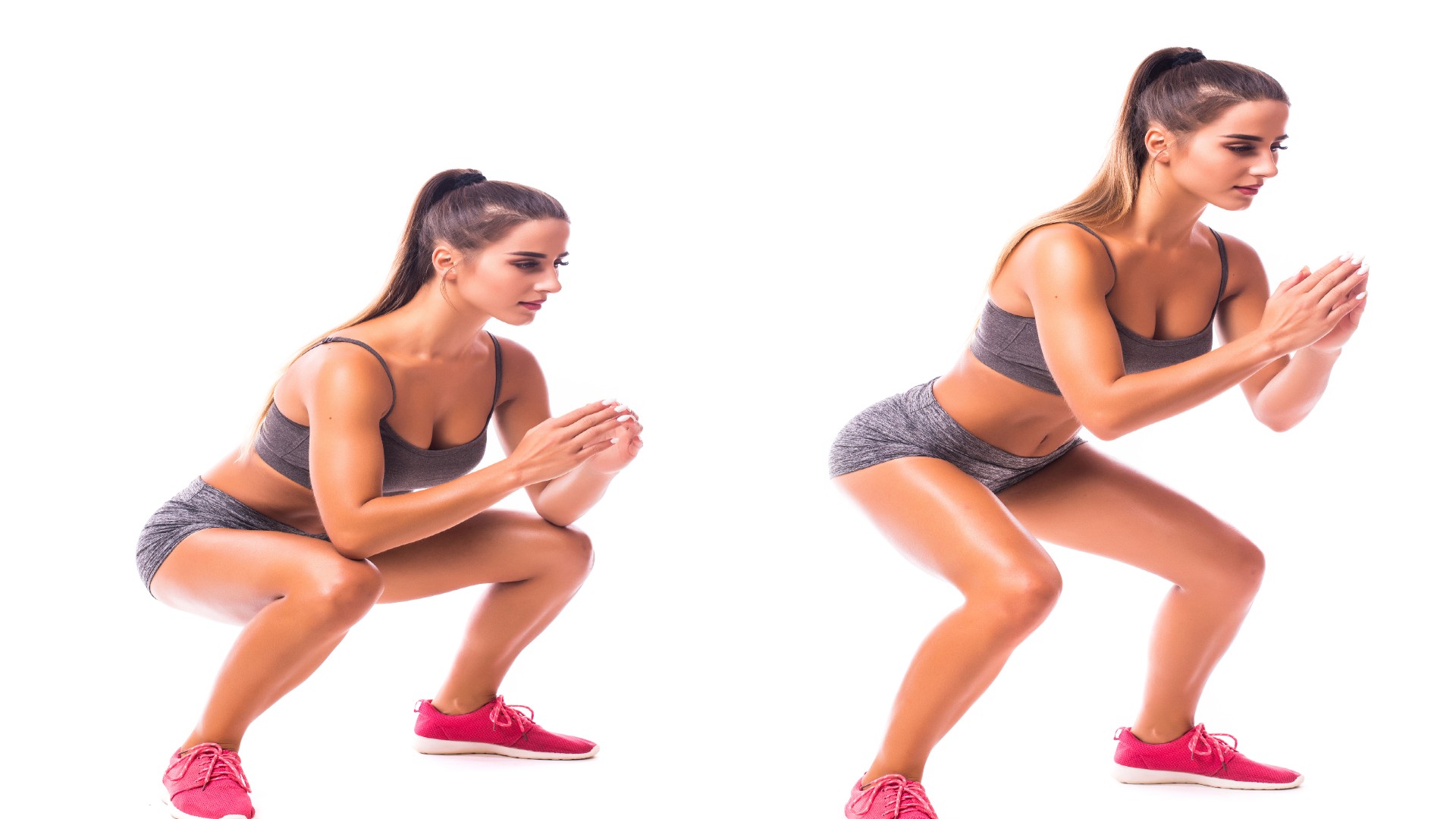
Frog squats target the glutes, quads, and hamstrings, improve ankle mobility, and build lower body strength and posture. Place a cushion or similar under your heels if you need to.
- Stand with feet hip-width or shoulder-width apart
- Bend at the knees and lower into a squat as low as possible
- Look forward, chest proud, back flat, and core engaged
- Place hands underneath both feet or on the floor in front of you
- Send your hips up and back and straighten your legs as you look down
- Re-bend your knees and repeat.
3. Chair pose
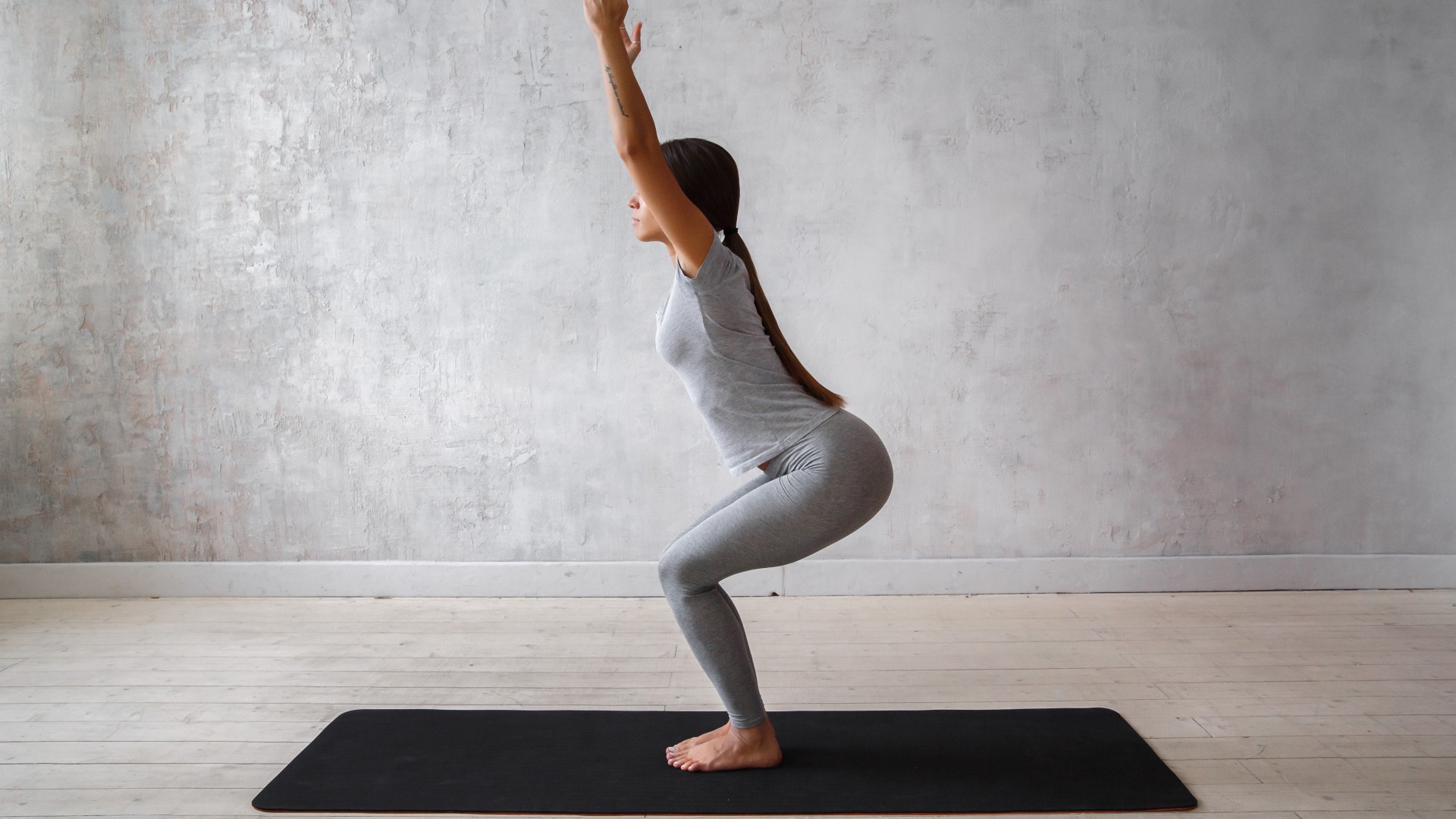
Chair pose is a yoga pose that develops flexibility and strengthens muscles in your lower body, lower back, ankles, and ankles. It also builds posture, core strength, and stability.
- Stand with feet hip-width apart
- Inhale as you raise and extend your arms overhead, hugging your biceps close to your ears
- As you exhale, bend your knees, send your bum downward, and lower the thighs parallel to the floor, big toes touching
- Lean slightly forward and maintain a straight back with heels down
- Press through your heels and squeeze your shoulder blades together.
4. Standing calf stretch
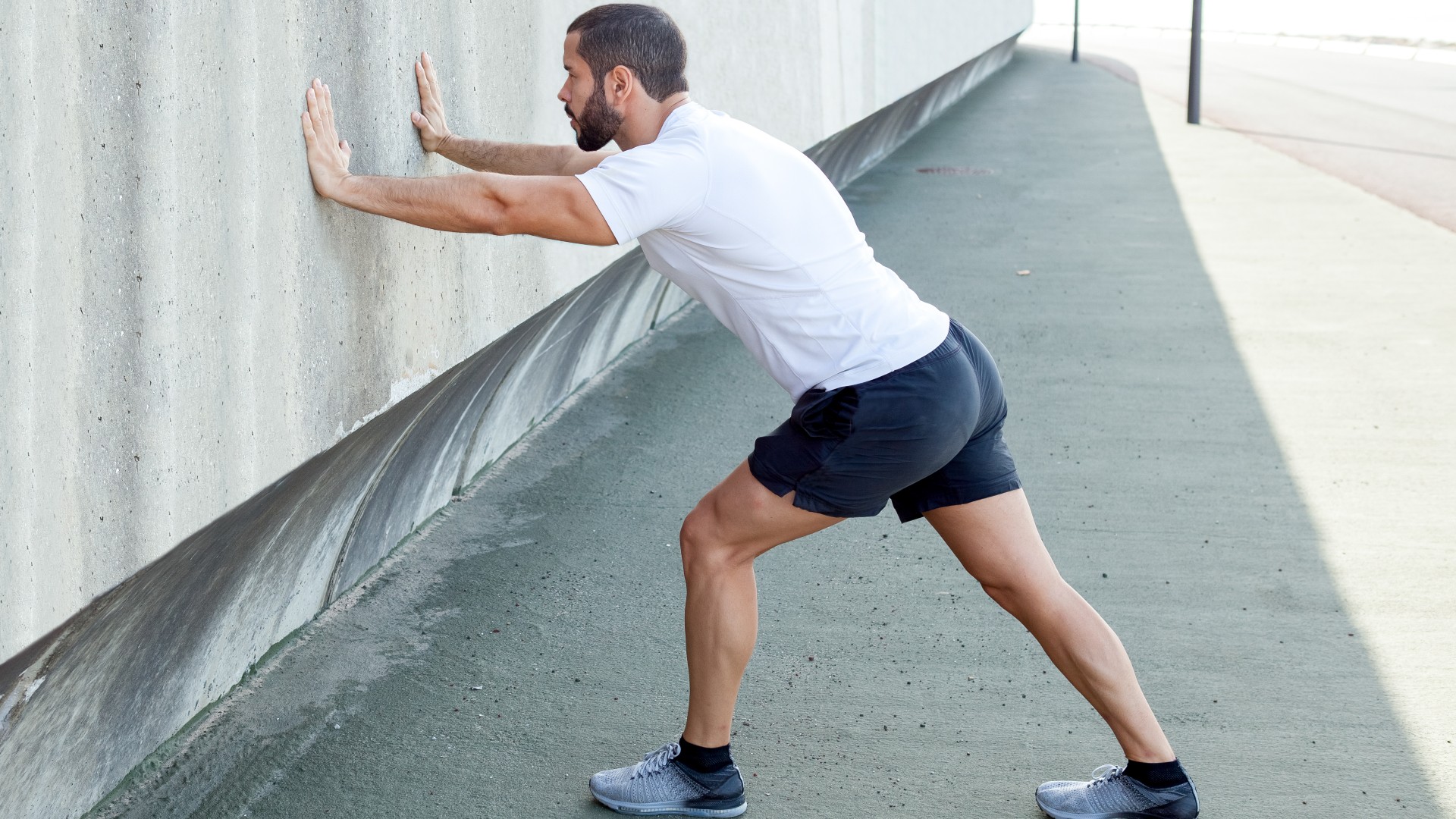
The stretch releases tension in the calves and ankles and improves range of motion. Start close to the wall, then take steps away as you develop flexibility.
- Stand facing a wall, then step your left foot back
- Press your hands flat against the wall
- Ensure both feet point forward and heels plant down
- Keep your back straight and gently lean forward until you feel a stretch in the back calf muscle. Hold, then switch sides.
5. Downward dog
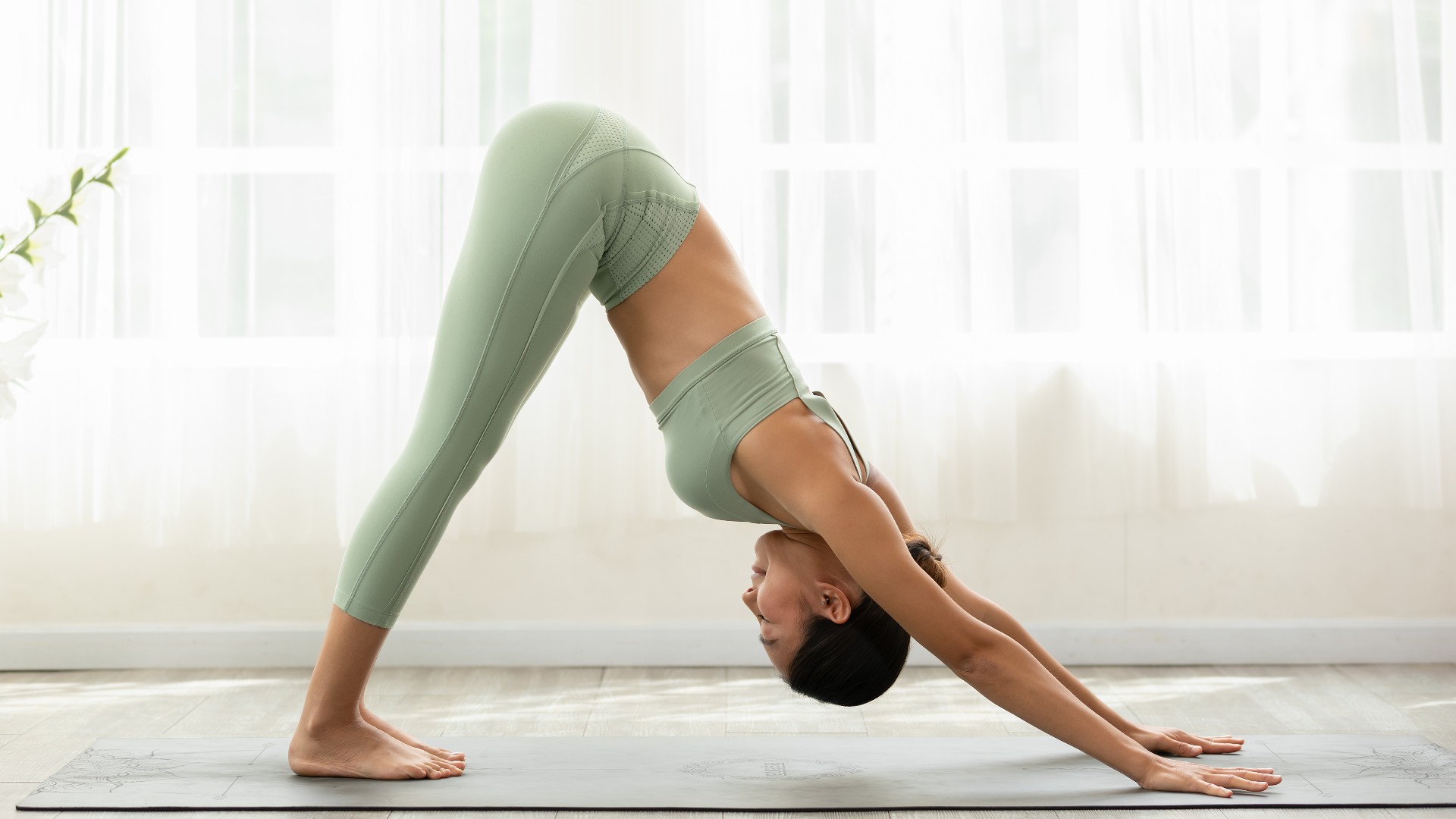
Downward dog develops shoulder, wrist, and ankle stability, stretches the muscles down the backs of your legs, upper back, and shoulders, and lengthens the spine.
- Start in a tabletop position on hands and knees
- Place your hands shoulder-width apart and press palms down, fingers stretched
- Inhale as you tuck your toes and lift your knees
- Exhale as you send your hips up and back behind you, extending your legs
- Drive your heels down and maintain a soft knee bend, pressing through your hands to lift your hips higher
- Hold, or peddle your heels to release the ankles.
6. Elevated heel raises

Like calf raises, heel raises improve ankle mobility and stretch and strengthen the calf muscles.
- Stand with your feet elevated on the edge of a stable surface, like a curb
- Pressing through the balls of your feet, slowly raise onto your tip toes and squeeze your calves
- Keep your spine tall and straight and your core engaged, then pause
- Slowly lower your heels below the edge of the curb as far as you can, then pause.
Can tight hamstrings cause ankle pain?

Your hamstrings run down the back of the legs, attaching at the hips and inserting into your knee joints. Short and tight hamstrings could trigger issues in the surrounding joints and muscles, which creates a knock-on effect during exercise.
Limited range of motion in your lower back, ankles, and calves, or sore legs when you run or walk could be a sign of muscle weakness or overworked muscles. When this happens, your body takes protective measures to keep you safe, tightening the muscles in response. You can combat this by adding regular strength routines and stretching exercises — these are the 10 best hamstring exercises to try.
Dynamic vs static stretching
Dynamic stretches (mobility exercises) help warm the muscles and joints in preparation for exercise and increase the range of motion around the joints. Examples include hip circles and ankle rolls. Static stretching helps to relax tired and sore muscles, boost flexibility, and aid recovery post-workout, like a hamstring stretch.
Research has debated whether or not stretching helps, but some people notice better flexibility and mobility, reduced symptoms of delayed-onset muscle soreness (DOMS), and improvements in daily life and workout performance.
More from Tom's Guide
Looking for more? Here are more ways to stretch with Tom's Guide.
- These three assisted stretches develop flexibility and strength without equipment
- I just tried these simple hip mobility exercises for hip flexor pain
- I tried stretching with StretchLab to boost flexibility.

Sam Hopes is a level 3 qualified trainer, a level 2 Reiki practitioner and fitness editor at Tom's Guide. She is also currently undertaking her Yoga For Athletes training course.
Sam has written for various fitness brands and websites over the years and has experience across brands at Future, such as Live Science, Fit&Well, Coach, and T3.
Having coached at fitness studios like F45 and Virgin Active and personal trained, Sam now primarily teaches outdoor bootcamps, bodyweight, calisthenics and kettlebells.
She also coaches mobility and flexibility classes several times a week and believes that true strength comes from a holistic approach to training your body.
Sam has completed two mixed doubles Hyrox competitions in London and the Netherlands and finished her first doubles attempt in 1:11.
